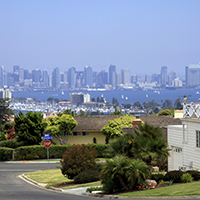International & Public Affairs

OUR EFFORTS
As the leading voice for business, the Chamber is committed to making San Diego’s binational region the best place to live and work. We’re driving the development of global policies that build a strong economy and create the jobs to support families, neighborhoods, and the entire region. Since the late 1800s, the Chamber has helped San Diego grow by engaging our elected officials, our members, and the public to address the issues most important to job creation and our region. Today, as much as ever, we are committed to an even better future for San Diego.
MEMBER-DRIVEN POLICY
The strength of the Chamber is in our members. Whether serving on a policy committee, volunteering to testify before the City Council, supporting our PAC, or contacting your elected officials on issues of the day, you can help us make a difference.
Policy Priorities
Policy Priorities
At A Glance
As the largest member-supported business organization in San Diego’s binational region, the Chamber rallies the political clout of the business community and serves as the region’s leading policy advocate on critical business issues.







